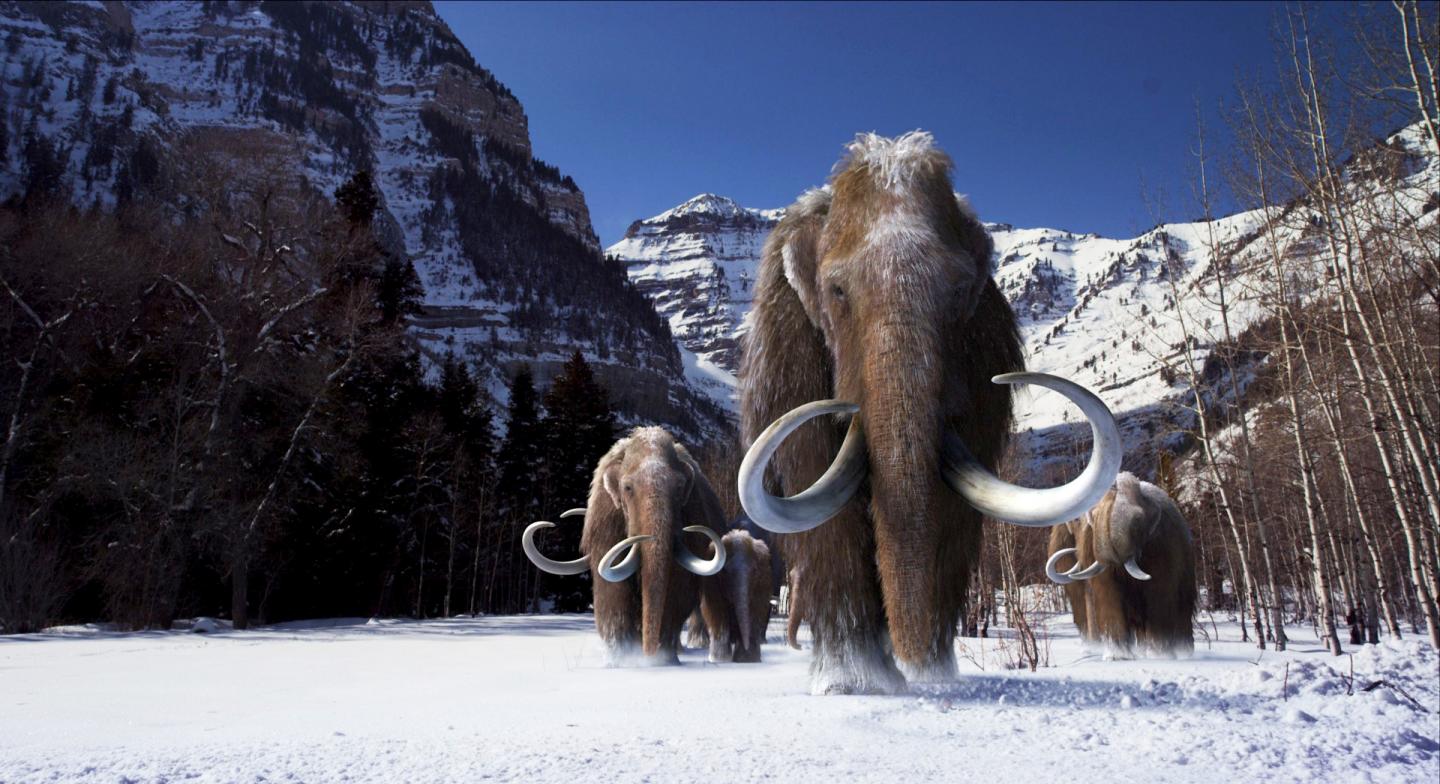
These are woolly mammoths. Evolutionary change in a gene resurrected in the lab from the extinct woolly mammoth altered the gene's temperature sensitivity and likely was part of a suite of adaptations that allowed the mammoth to survive in harsh arctic environments, according to new research. In a study published in Cell Reports on July 2, 2015, researchers determined the whole-genome sequence of two woolly mammoths and three modern Asian elephants, predicted the function of genetic changes found only in the mammoths, and then experimentally validated the function of a woolly mammoth gene reconstructed in the lab. The research team includes scientists from Penn State University, Nanyang Technological University in Singapore, and the University of Chicago.
"This project represents a departure from previous efforts to study ancient genomes," said Webb Miller, project co-leader and professor of biology and of computer science and engineering at Penn State. "We've sequenced and analyzed a number of genomes, including several from extinct species, but before this project, we limited ourselves to purely computational analyses. However, our dissatisfaction with those types of studies increased over time as we observed a wide disparity in published predictions. We therefore refined our strategy for the current project by focusing on computational predictions that can be experimentally validated."
Project co-leader Stephan Schuster, formerly of Penn State and now at the Nanyang Technological University in Singapore, said, "I've been trying for a long time to show that ancient genomes can be sequenced as accurately as extant genomes, and the woolly mammoth seemed like an ideal species for demonstrating this capability. The Asian elephant genomes were needed for comparison in the subsequent analyses."
The two woolly mammoths sequenced by the team died about 20,000 and 60,000 years ago, respectively. To weed out errors that could result from the sequencing process or the age of the genetic material recovered from the mammoths, and to ensure the quality of the genetic data, the researchers read each letter in the mammoth's genomic alphabet an average of twenty times. They then compared the genomic sequence of the mammoths to the newly-sequenced genomes of the three Asian elephants and to the genome of the more-distantly related African elephant.
The research team found a total of approximately 33 million places where the letters, known as nucleotides, varied among the three species. Of particular interest to understanding mammoth-specific biology were 1.4 million genetic variants in which the two mammoths were identical for one variant and the Asian and African elephants shared a different, likely more-ancient variant. Of these "shared, derived" variants, the scientists identified 2,020 that resulted in a change to the amino-acid sequence of a protein encoded by a gene and 26 that caused the loss of a gene's function. They also identified one newly duplicated gene in the mammoths.
"The collection of 2,020 amino-acid variants that we discovered in mammoths, but that our analysis showed are not present in living elephants, represents a treasure trove that can be mined for the genetic causes of mammoth-specific characteristics and whose functions can be tested in further experiments," said Miller. "We used very strict conditions to keep the accuracy high, since computation is inexpensive but experiments are costly. There is no doubt that many more mammoth-specific variants are waiting to be discovered."
Of the amino-acid variants shared between the two mammoths, but not found in the living elephants, the research team found a disproportionate number of changes in genes involved in hair development, how the body stores and processes fats, and how the body senses temperature. "It is gratifying that the strongly enriched classes of genes include many of those related to the adaptation of the woolly mammoth to extreme cold," said Vincent J. Lynch of the Department of Human Genetics at the University of Chicago, the first author of the paper.
The researchers then performed laboratory experiments verifying a computational prediction that a mammoth-specific change in a protein called TRPV3, known to be related to temperature sensation, hair growth, and body-fat storage, modifies the protein's response to temperature changes.
"Identifying the genetic changes that underlie evolution of physical traits is challenging, particularly in non-model and extinct organisms," said Lynch. "Current methods make it relatively straightforward to sequence and computationally analyze genomes. However, predicting function from computational analysis alone is still incredibly difficult and unreliable. What's needed is laboratory confirmation of those predictions, which is where the challenge lies. Our paper shows how it can be done."
Source: Penn State
 Print Article
Print Article Mail to a Friend
Mail to a Friend
